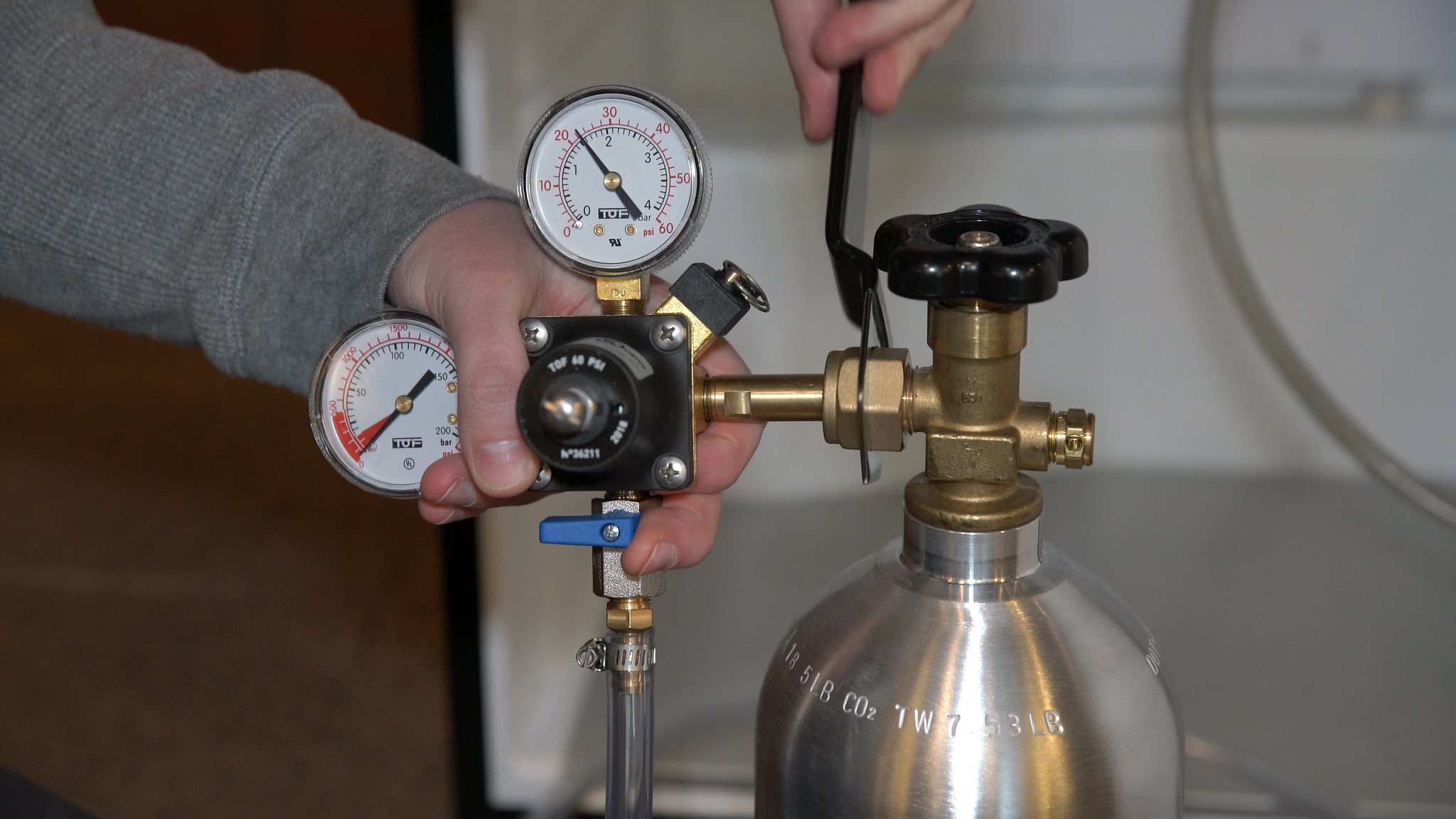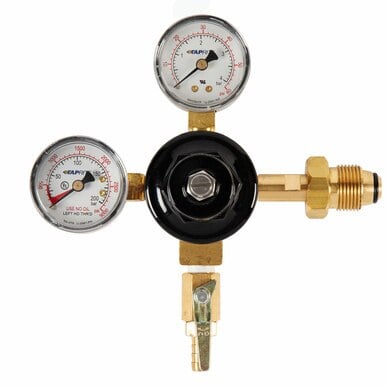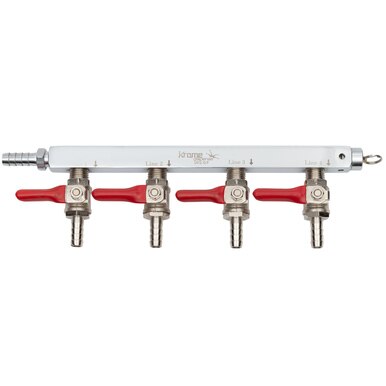How to Read a Co2 Regulator Gauge
Whether y'all are pouring draft beer at home by way of a kegerator or in a commercial setting using a more complex setup, a beer regulator is a crucial slice of dispensing equipment. The contents of CO2 & nitrogen gas tanks are under extremely high pressure. The main function of any regulator is to lower that pressure to a safer, more than usable level earlier the gas reaches the keg. The regulator is also responsible for maintaining the optimal carbonation level of the beer being dispensed. A primary CO2 regulator hooks up to your CO2 tank. In simple draft configurations, the air line so runs from the regulator to the keg coupler. If you are dispensing multiple kegs from one tank of gas, the airline might pass through a gas blender or secondary regulator before reaching the coupler. If you desire to dispense Guinness or any other nitro beer, you'll need a main Nitrogen regulator. Like a primary CO2 regulator, it connects directly to the gas tank or cylinder to moderate its pressure. Unlike a CO2 regulator, information technology attaches to the tank by mode of a female stalk piece. A CO2 regulator will non properly attach to a Nitrogen tank. If you lot want to dispense a nitro beer without investing in a Nitrogen regulator, you can purchase a CO2 to nitrogen adapter piece instead. Whether you are talking Nitrogen or CO2, primary regulators come up in single-gauge and double-gauge models. Single-estimate regulators just take a depression-pressure level gauge, which measures from 0 to threescore PSI the output pressure of the gas being dispensed into the keg. Double-estimate regulators (shown above) have both a low-pressure gauge and a high pressure gauge, which measures from 0 to 3000 PSI the corporeality of CO2 or Nitrogen left in the tank. A loftier-pressure level gauge is extremely helpful but non essential to typhoon beer dispensing. If you are dispensing ii or more kegs from a single gas source, a secondary beer regulator may be required. That's because different beers often call for different dispensing pressures to maintain the carbonation level prescribed past the brewer. Failure to adhere to the brewer'due south recommendation is to risk irresolute the advent, mouthfeel, and taste of a beer. To dispense multiple kegs all at the same pressure, you'll need a distribution bar, which is basically a large splitter. The primary regulator determines the pressure of gas flowing through a distributor. A distribution bar does not allow yous to adjust the pressure for each keg. Well-nigh beers are dispensed somewhere in the range of 10 to 15 PSI. If y'all are pouring a nitro beer, that range increases to 30 to 40 PSI. For more than data on how to properly set the pressure for your draft beer system consult our guide to Determining the Right Force per unit area for Your Draft Beer Arrangement too as our viii Answers to Frequently Asked Draft Beer CO2 Questions. A dispensing pressure that'due south too low will result in excessive foam as the gas dissolved in the beer comes out of solution. Eventually, the keg will dispense flat beer. To right the problem, brand certain your regulator is set to the proper PSI. If it isn't, turn the aligning screw clockwise to raise the pressure to the prescribed level. Otherwise, you should brand certain that your CO2 tank is on and not empty, and that the the air line is not obstructed. If all of those things check out and y'all are still getting foamy to apartment beer, yous may demand to replace your regulator or gauge. Regulators exercise wear downwards with time and use. You will by and large demand to replace them every iv to half-dozen years. A too-high dispensing pressure will force additional gas into the beer, leaving you with foamy beer that comes quickly out of the faucet. If your beer is over-carbonated, the foam will appear tight with large bubbling. If yous encounter this trouble, it'south easy to gear up. Plow the adjustment screw counterclockwise to lower the pressure to the proper level and then describe a few foamy pitchers. You can also use your coupler'due south relief valve to bleed out the extra pressure. These measures will forcefulness your system to balance itself out over again. If you're having bug with pouring pints from your kegerator or draft beer arrangement, then check out our tips for Troubleshooting Your Draft Beer System.

What Are Typhoon Beer Regulators?

Parts of a Typhoon Beer Regulator
Types of Draft Beer Regulators
CO2 Regulator

Nitrogen Regulator

Secondary Regulator

Distribution Bar

Troubleshooting Improper Dispensing Pressure

KegWorks
KegWorks has been selling absurd tools for drinking and serving knowledge on tap since 1998. Nosotros are all nigh enjoying good drinks with skillful friends.
Source: https://content.kegworks.com/blog/pressure-co2-nitrogen-beer-regulators-guide
0 Response to "How to Read a Co2 Regulator Gauge"
Post a Comment